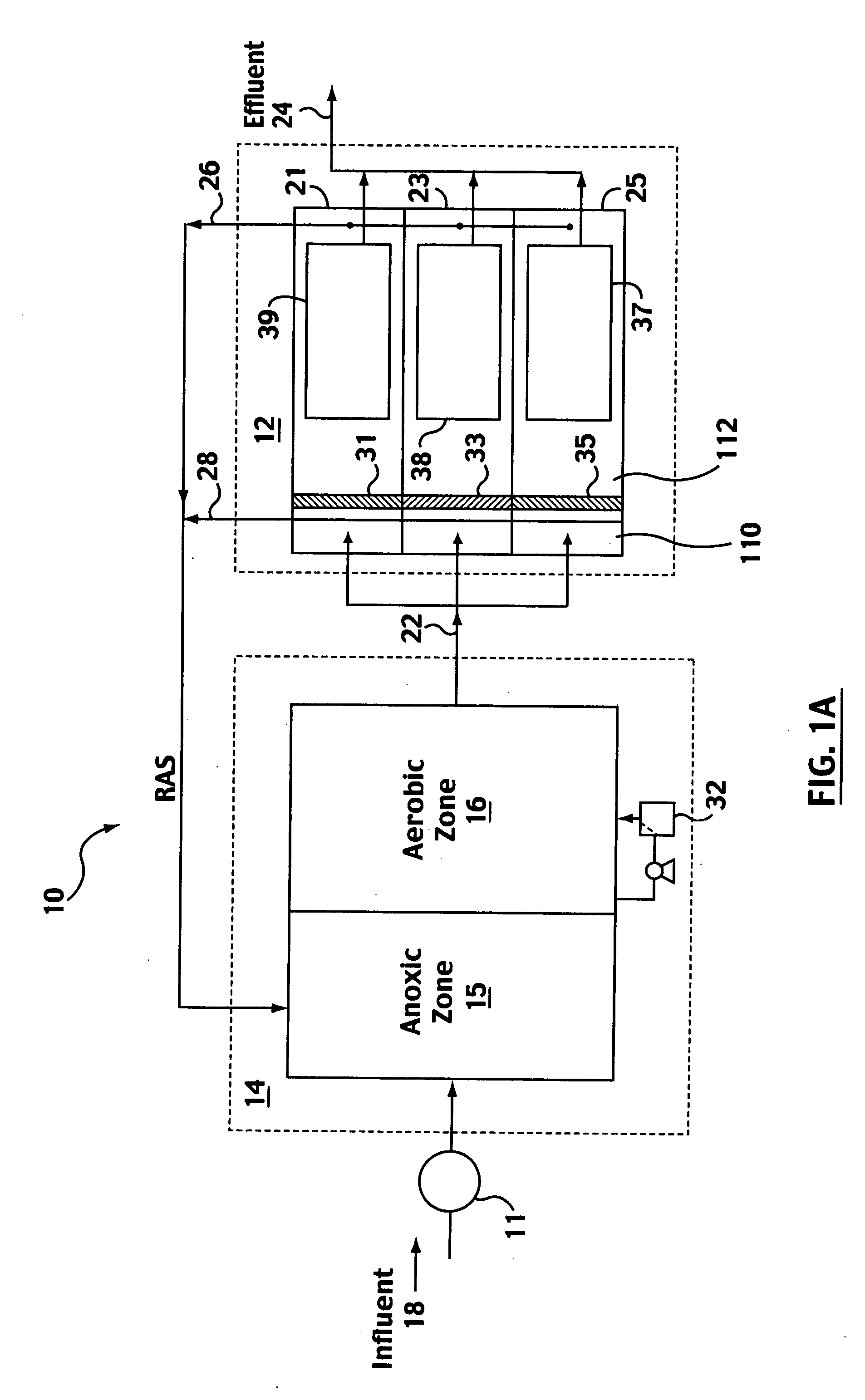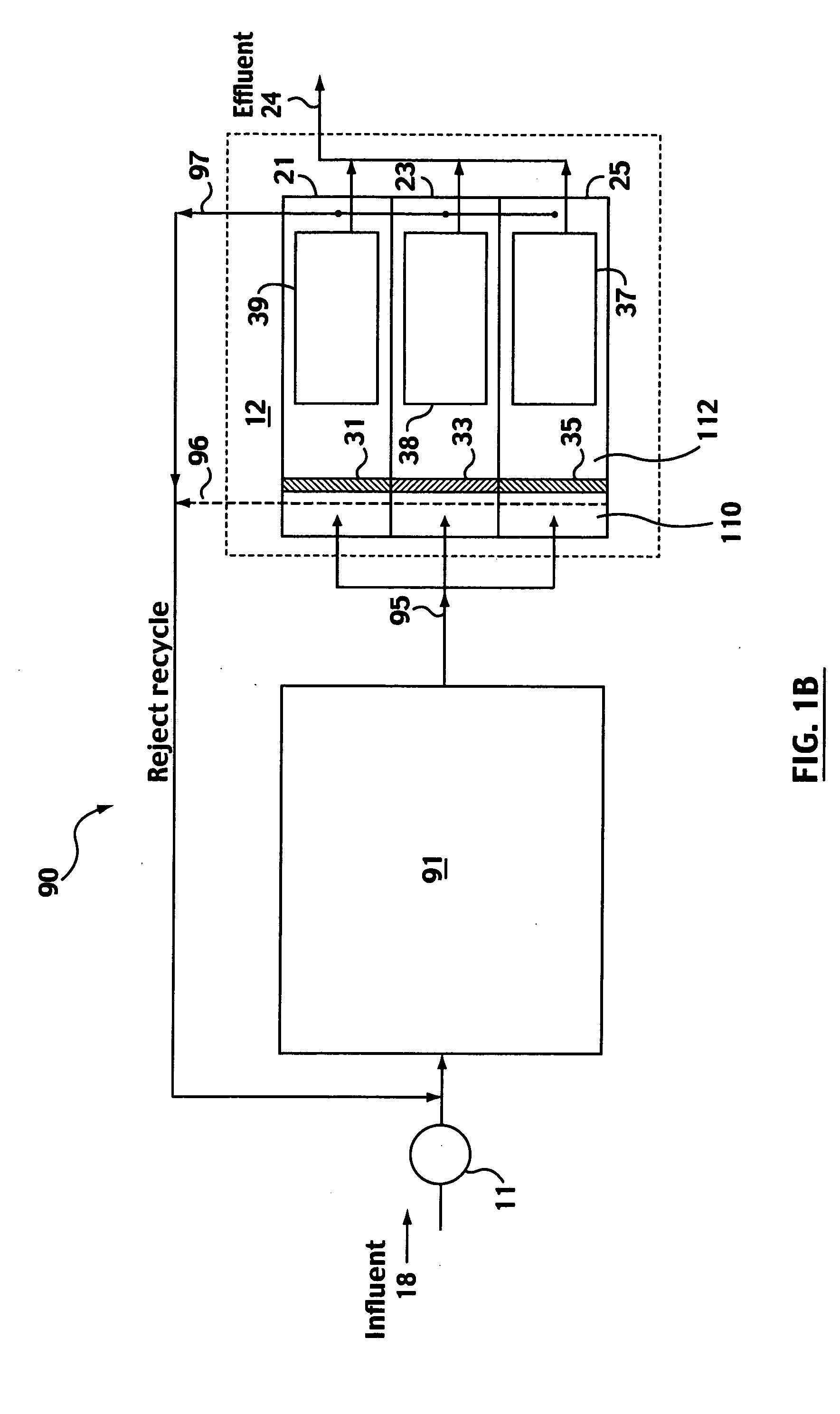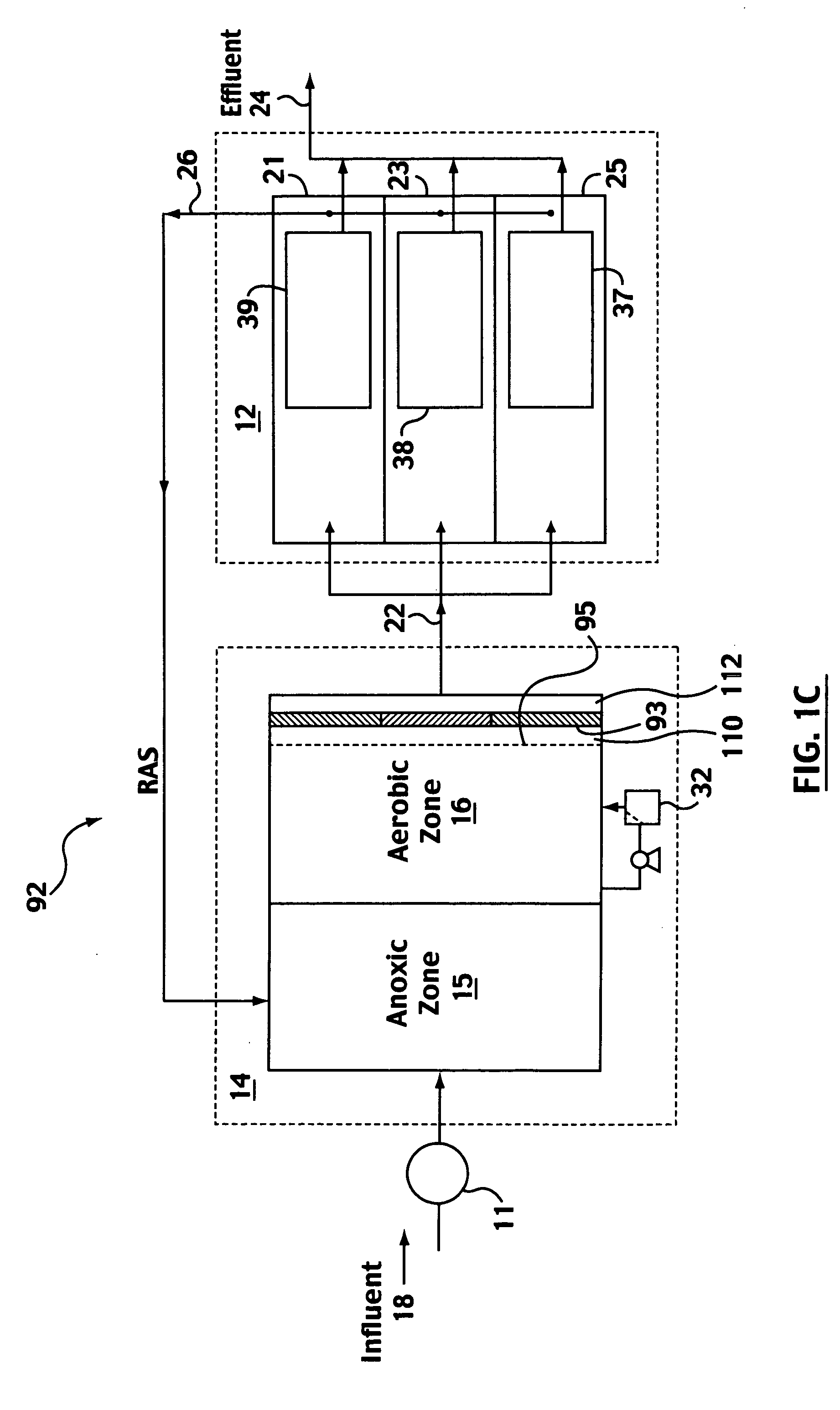Screening apparatus for water treatment with membranes
a technology of water treatment and screening apparatus, applied in the field of screening, can solve the problems of affecting the effect of pre-screening feed stream, and affecting the effect of screening backwashing
- Summary
- Abstract
- Description
- Claims
- Application Information
AI Technical Summary
Benefits of technology
Problems solved by technology
Method used
Image
Examples
Embodiment Construction
[0043]FIG. 9 shows a screening apparatus 100 having a static screen 35 mounted in a vessel 102. The vessel 102 may be, for example, a tank, trough, channel or other conduit or holding means for water. The vessel 102 has a bottom 104 and a pair of opposed sides 106, the closer of the two opposed sides 106 not shown, defining a pathway for water to flow through the vessel 102 by generally open channel flow. The sides 106 may be curved, as in a round tank. The static screen 35 spans between the opposed sides 106 either directly or by spanning between partitions or other non-porous elements attached to the sides 106. The static screen 35 also extends from the bottom 104 of the vessel to above a surface level 108 of the water in the vessel 102, either directly or by extending between non-porous elements attached to the bottom 104 or across a higher elevation of the vessel 102. In particular, the static screen 35 may have a screening surface 35a and a non-porous surface 35b. Water passing...
PUM
| Property | Measurement | Unit |
|---|---|---|
| size | aaaaa | aaaaa |
| size | aaaaa | aaaaa |
| surface area | aaaaa | aaaaa |
Abstract
Description
Claims
Application Information
 Login to View More
Login to View More - R&D
- Intellectual Property
- Life Sciences
- Materials
- Tech Scout
- Unparalleled Data Quality
- Higher Quality Content
- 60% Fewer Hallucinations
Browse by: Latest US Patents, China's latest patents, Technical Efficacy Thesaurus, Application Domain, Technology Topic, Popular Technical Reports.
© 2025 PatSnap. All rights reserved.Legal|Privacy policy|Modern Slavery Act Transparency Statement|Sitemap|About US| Contact US: help@patsnap.com



